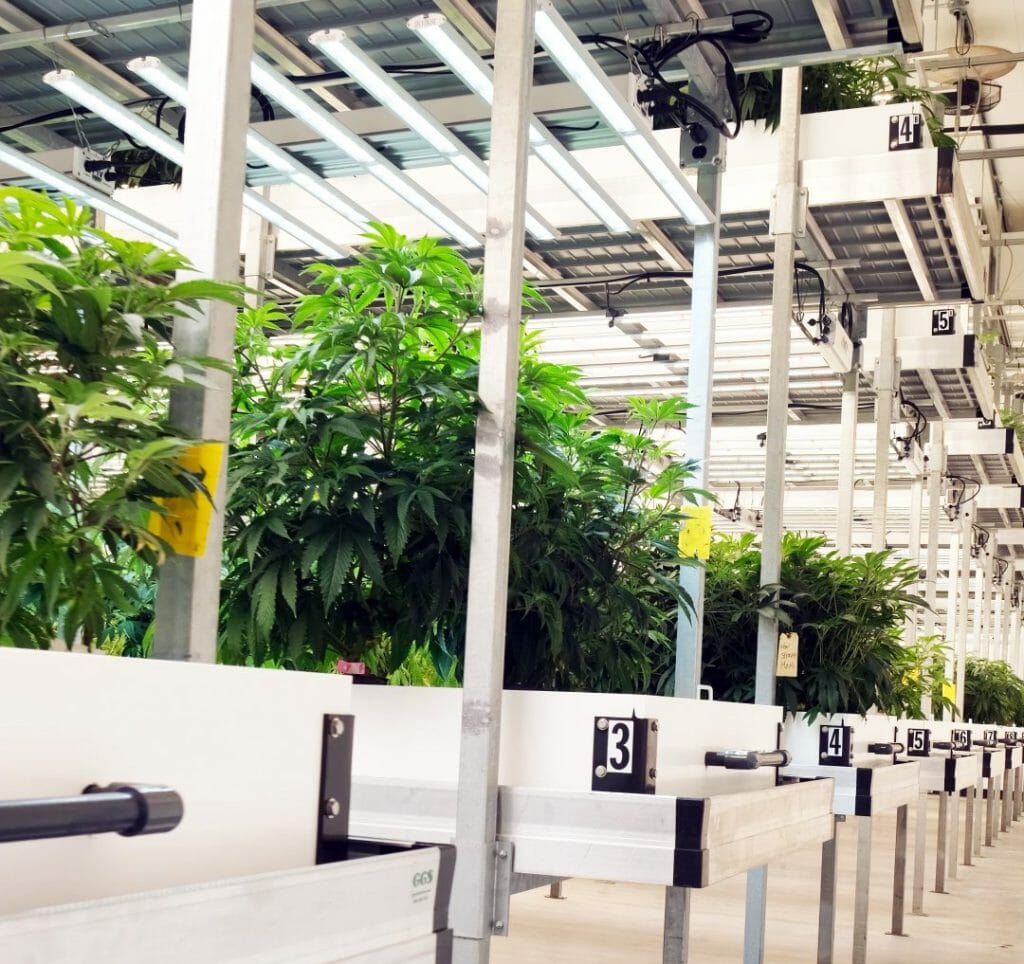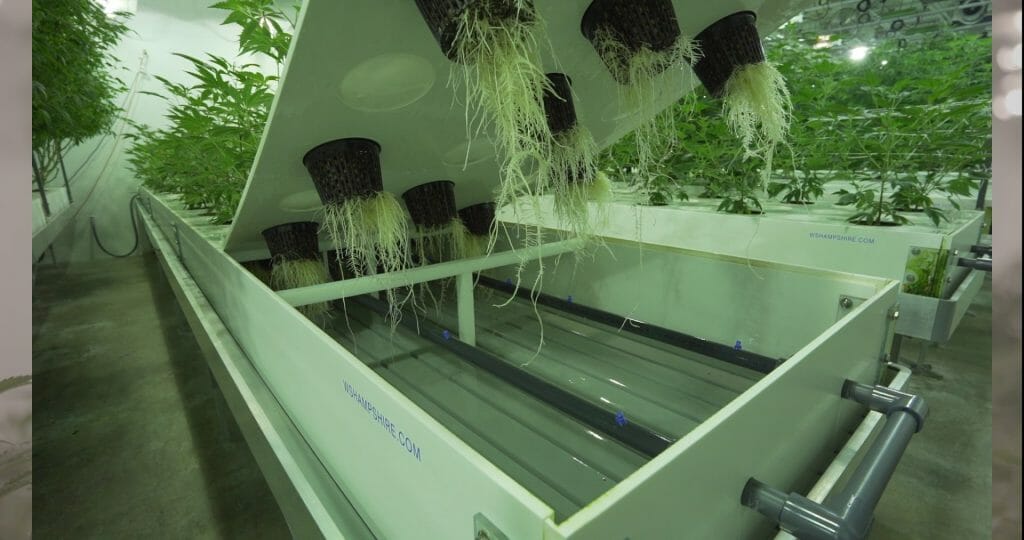Aeroponic Growing: Environmentally Friendly
Aeroponics is an advanced and highly efficient form of hydroponic farming where the plant roots are suspended in a self-contained system and fully exposed to environmental air. The roots are sprayed with an enriched mist, giving growers precise control over the delivery of water and other nutrients. The abundance of oxygen promotes nutrient uptake, requiring plants to spend zero energy in acquiring resources. Aeroponics provides yield increases of up to 75% when compared to hydroponics and other growing styles.
The operation of an aeroponic system are generally more straight forward and affordable to manage than with traditional set ups because there is no media or drip lines to manage. Think of all the time and cost spent on purchasing, receiving, storing, conditioning, handling, and maintaining drip lines and media. Then there is the issue of disposing of mountains of used coco, sol, or rockwool cubes… it’s not exactly environmentally friendly!
Other substantial benefits of aeroponics over hydroponics and other grow systems include:
- Sustainability: Aeroponics is considered a sustainable farming method due to its efficient use of resources. Technology can further enhance sustainability by optimizing resource consumption, such as water and nutrients. Advanced monitoring systems can detect and address any inefficiencies, minimizing waste and maximizing resource utilization.
- Time Efficiency: Technology in aeroponics allows for precise control over various environmental factors, which helps plants grow faster, leading to shorter crop cycles and increased productivity compared to traditional farming methods.
- Increased Production: Technology has a substantial impact on increasing production in aeroponics by optimizing various aspects of plant growth and resource management. For example, collecting and analyzing data on plant growth, nutrient levels, and environmental conditions can yield insights that facilitate the development of effective and sustainable growth strategies.
- Clean Production: Investment in technology for aeroponics results in long-term cost savings. By eliminating the need for soil and reducing water usage, aeroponics lower production costs over time. Additionally, the high yield potential and faster crop cycles lead to increased profitability.
- Cost Effective: Investment in technology for aeroponics results in long-term cost savings. By eliminating the need for soil and reducing water usage, aeroponics lower production costs over time. Additionally, the high yield potential and faster crop cycles lead to increased profitability.
- Space Efficiency: Technology allows for the designing and constructing of modular growing structures tailored to the available space. These structures can be optimized for efficient space utilization while accommodating the specific needs of plants.
- Product Size: Technology allows real-time monitoring of environmental factors such as temperature, humidity, CO2 levels, and light intensity. Automated control systems can adjust these parameters to create the ideal growing conditions, maximizing plant growth and yield.
- Continuous Production: Technology helps aeroponic systems operate continuously, allowing for year-round production. By providing a controlled environment, plants can be grown regardless of external seasonal variations, ensuring a steady and reliable supply of produce.
Aeroponics systems are highly adaptable and can be used to grow a wide variety of crops, including cannabis, herbs, leafy greens, vegetables, and fruits.



Nova Aeroponics & Cannabis
Cannabis, in particular, thrives in an aeroponic grow environment. For instance, plants do not have to battle one another for a sufficient share of oxygen, and they receive a steady supply of nutrients directly to the roots. Most importantly, healthy cannabis plants grown in a controlled aeroponic system produce impressive flowering production and are less susceptible to pest invasion.
